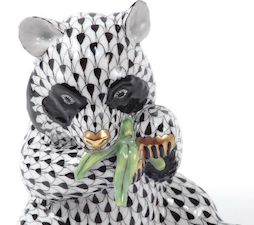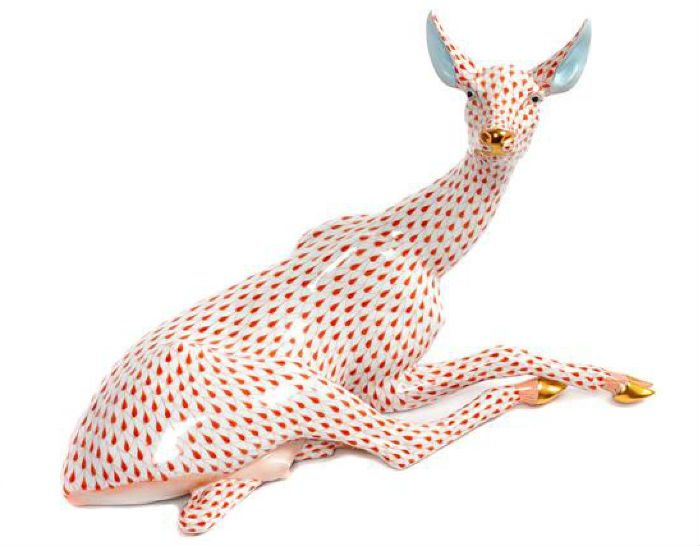
NEW YORK – It’s been said that over 90 percent of the original Fortune 500 companies are no longer in business, a fact that makes the Herend Porcelain Manufactory something special. The maker of luxury, hand-painted and gilded porcelain, named for the town in Hungary that serves as its base of operations and home to the Porcelain Museum of Herend, has been producing its beautiful and highly collectible porcelain pieces, uninterrupted, since 1826. That’s quite a feat.
The company was founded by Vince Stingl, originally as an earthenware pottery manufacturing factory. When he went bankrupt, his creditor, Moritz Fischer, took over the business in 1839. Fischer wasn’t just a numbers cruncher; he was an ambitious man with some bold ideas. He started making artistic porcelain soon after taking control. Within 10 years he was selling his wares to the Hungarian aristocracy, then began displaying at exhibitions worldwide.
These included the First Hungarian Applied Art Exhibition, the Vienna Exhibition (1845), the Great Exhibition in London (1851), the Exhibition of the Industry of All Nations in New York (1853), and the Exposition Universelle in Paris (1855). The styles were well received, with Fischer even naming some of his popular patterns after well-known customers: Queen Victoria, Esterhazy, Batthyany, Rothschild and Apponyi. The world was Herend’s oyster, or so it seemed.
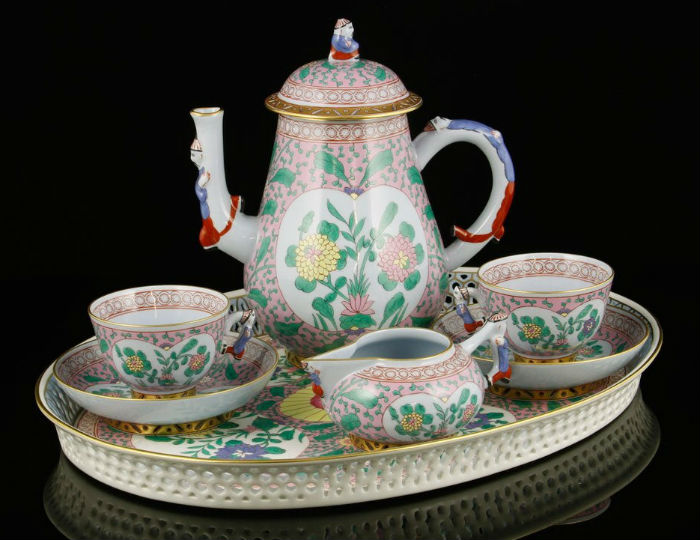
In 1874 Fischer turned management of the manufactory over to his sons. Bad move. The men foolishly turned away from artistic creation and sales immediately plummeted. The company nearly went bankrupt before being rescued by Jeno Farkashazy, the grandson of the founder and a trained ceramist. He revived the company by creating new designs and reintroducing traditional patterns. He also introduced novelty porcelain pieces in Paris (1900) and St. Petersburg (1901).
Between World War I and World War II, limited reproduction of traditional products (from the elder Fischer’s reign) was continued. After World War II, the company was nationalized. In 1993 it was privatized and, as of 2015, 75 percent of Herend was owned by management and workers. The factory is profitable today and exports to over 60 countries around the world. Their main markets are the United States, Italy, Japan and Russia. Many of the beloved classic patterns are still in production to this day.
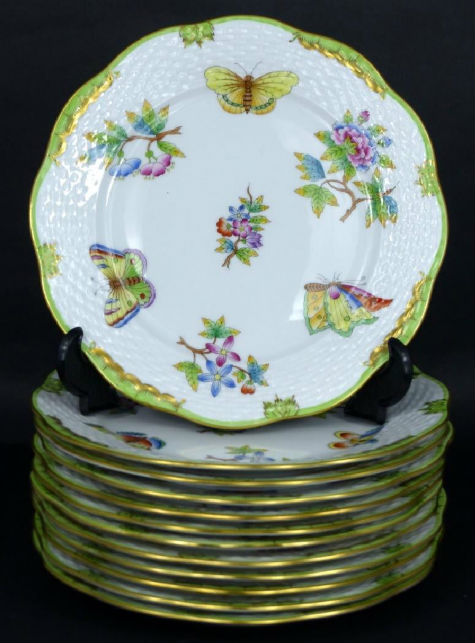
Herend porcelain is made from hard-paste porcelain, using a mixture of kaolin, feldspar and quartz. After cleaning, decorating and drying, the porcelain is initially fired at 830 degrees Celsius. The pieces are then dipped in a glaze and fired again, this time at 1,410 degrees Celsius. The result is white, translucent porcelain. At this stage it’s ready for painting by hand, and then (depending on whether it’s been painted with colors or with gold), it’s finished off with one or two more firings. Then it’s shipped off to be sold.
“Herend has been known for generations as the pinnacle of fine porcelain,” said Elizabeth Sharp of Leland Little Auctions in Hillsborough, N.C. “Its iconic patterns have become the porcelain equivalent of carrying a Louis Vuitton handbag or wearing a Chanel suit. Those in the know, know. The fishnet animal figurines are particularly recognizable and, at a slightly lower price point than the dinnerware, are an accessible way to partake in the Herend legacy. Many of the Herend patterns, like the Chinese garden and the fishnet animals, are available in a variety of colors, which adds to their versatility.”
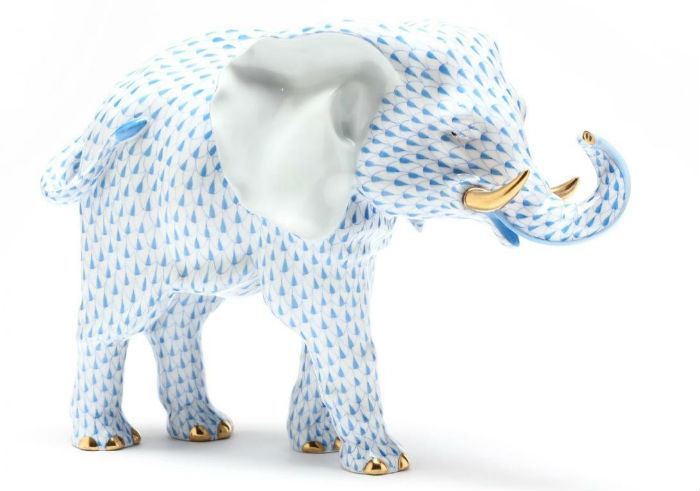
Part of the reason that Herend has maintained its place at the top of the porcelain market, Sharp said, is that they have been able to keep their prices high. “For many years,” she observes, “large sets of Herend dinnerware could be resold for their original market price. However, the recent trend away from formal dining has started to erode the stability of Herend prices. Our Porcelain Director, Pam Briggs, notes that many of her dealer clients are divesting themselves of their Herend dinnerware because they project that its value is sliding.”
Harry Morgan of Kaminski Auctions said Herend “is and has been popular because it’s luxury, hand-painted and gilded. Herend has always kept its quality at the highest standards. If you buy it as a gift, or for yourself, you know the quality will be there and it will always be beautiful, regardless of whether it is an expensive tea set or a simple, relatively inexpensive animal like a rabbit.” He added, “Of course, you also have the name recognition like Tiffany or Georg Jensen. You’re buying a name as much as you are buying a piece of porcelain.”
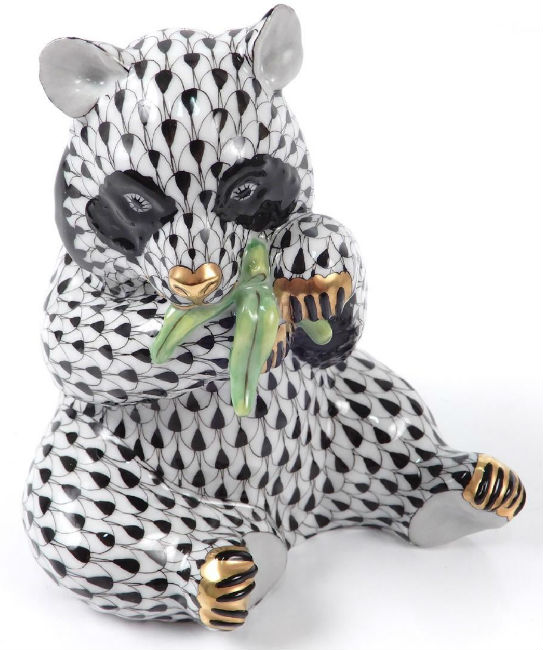
As for the demand for Herend porcelain today, Morgan said at the retail level it hasn’t changed much and probably won’t change, at least in at least the near future. But, he said, “The Internet has adversely affected values of pretty much all items that I would call collectibles, regardless of whether it’s Herend, Hummels, Lladro, Waterford or whatever. Prior to the Internet, certain pieces demanded premium prices. Now, virtually any piece can be found online, on multiple sites, and at any given time probably more than one is available. The rarity of everything is gone. Supply and demand. The demand has stayed about the same but the supply has gone way up.”
Morgan also pointed out that fewer people are buying used or old dinnerware, for two reasons. “First,” he said, “people don’t entertain like they used to. Second, even if they do entertain, say one or two holidays a year, they don’t use the old china because it has to be hand washed and nobody wants to hand wash, so they use the new china instead. The only reason people buy old or decorative china today is to display it in a china cabinet, much the same as a painting on a wall, and of course they want something very decorative. This is where Herend comes in. Because it is so decorative and beautiful, it fits the bill perfectly.”
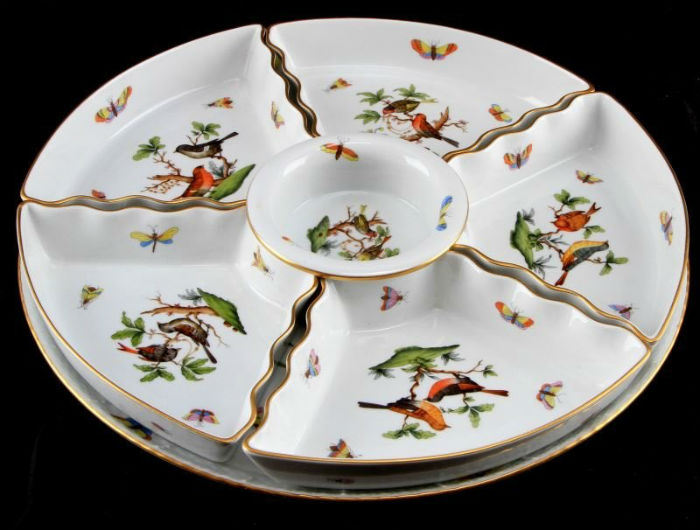
John Whitworth, president and owner of Affiliated Auctions in Tallahassee, Florida, said Herend was first imported to the United States around 1957 and was an instant hit because the artists’ attention to detail made for superb dinnerware. He described the current market for Herend pieces “stable as compared to really soft, with other makers,” adding, “When Herend introduced its animal figurines, with the popular Herend trademark fishnet design, that probably assured adequate demand in the future, as they remain very popular and they offer a wide variety, from whippets to giraffes.”


